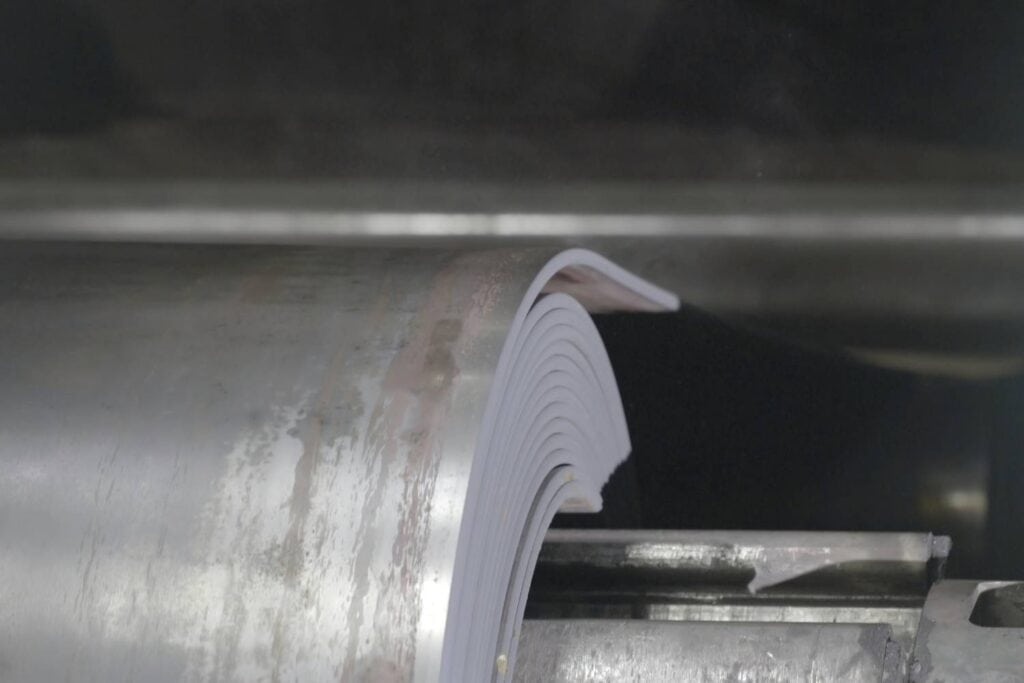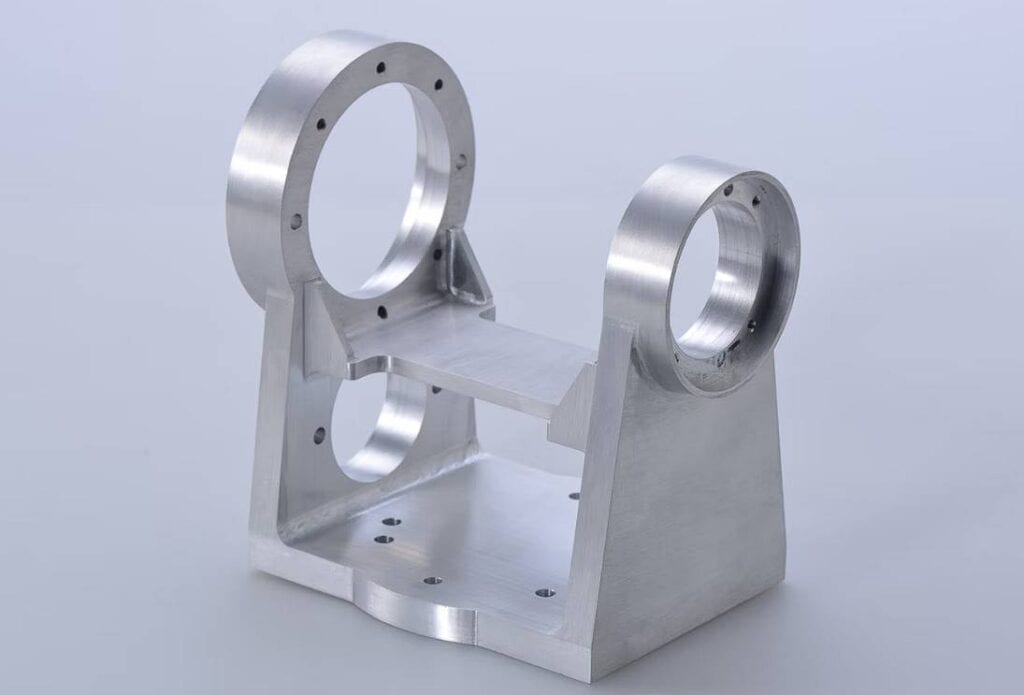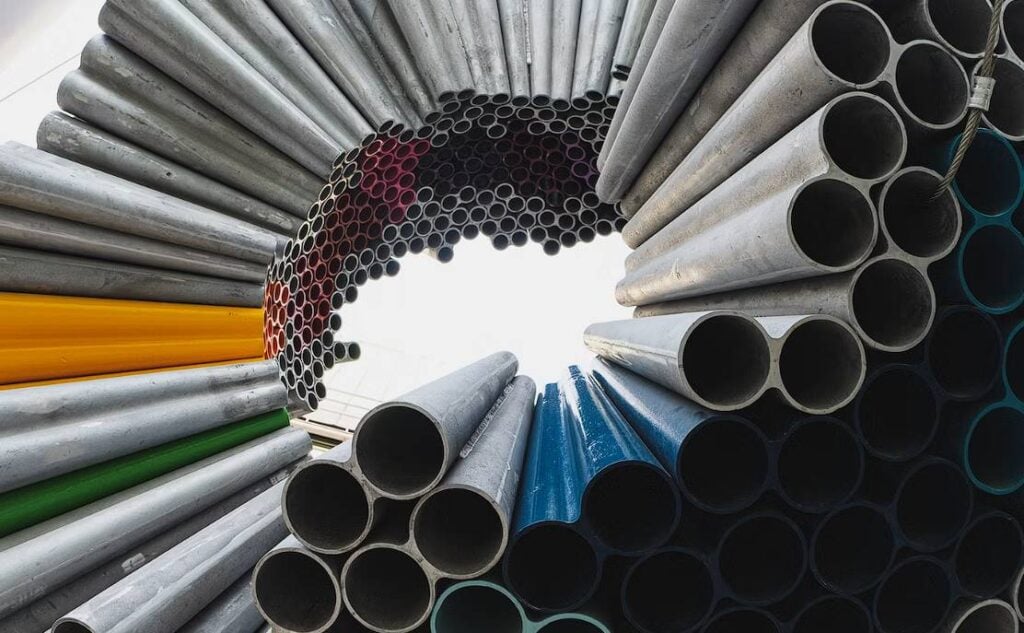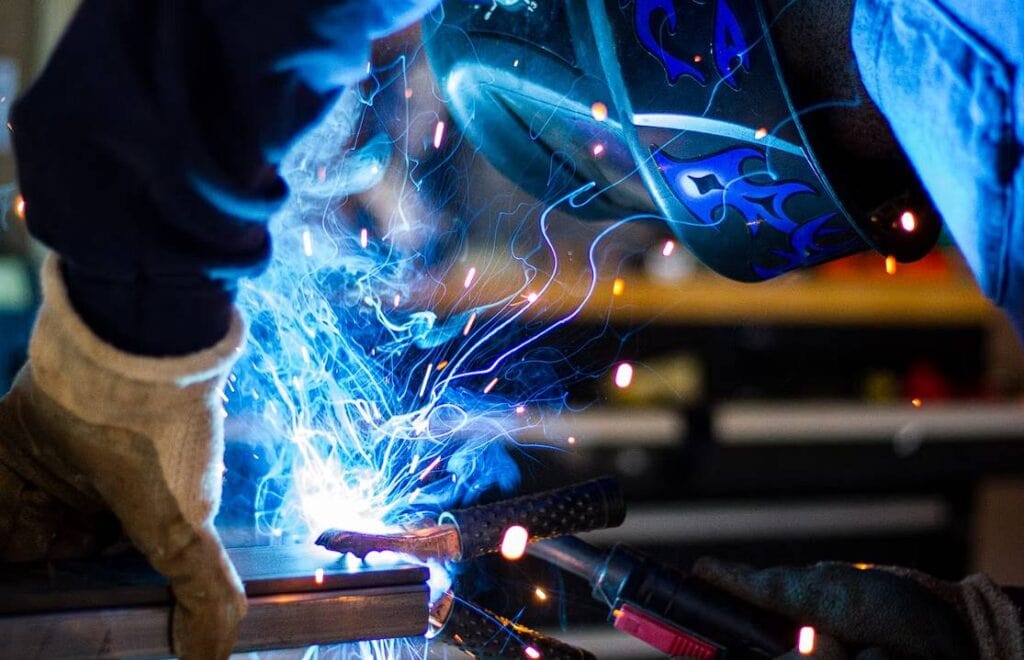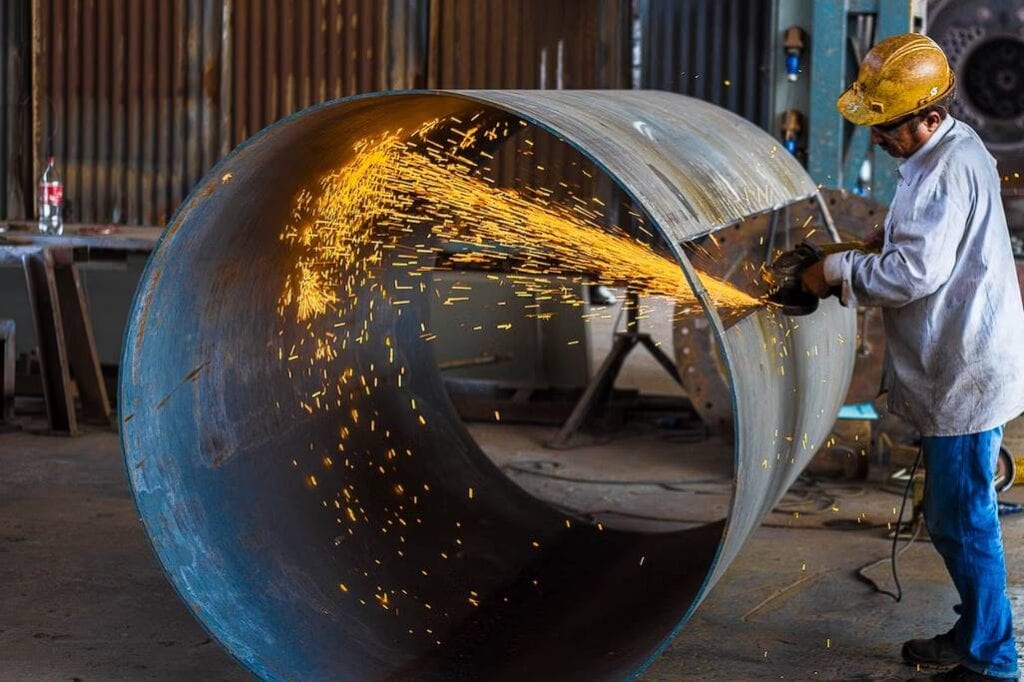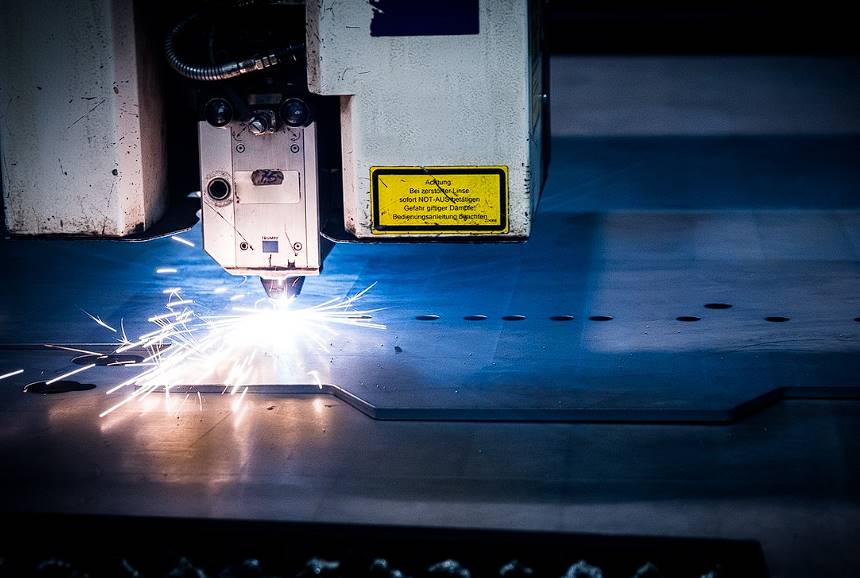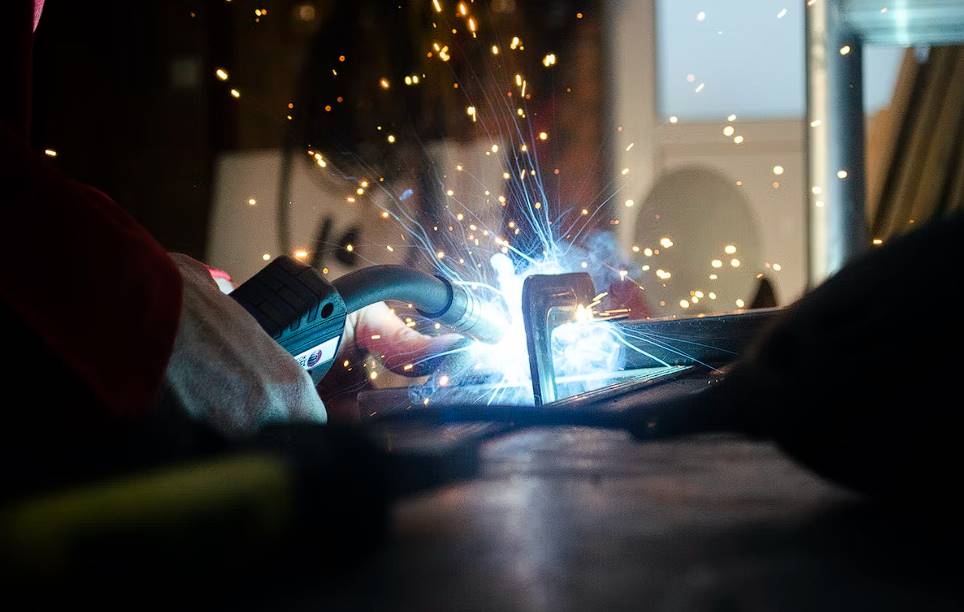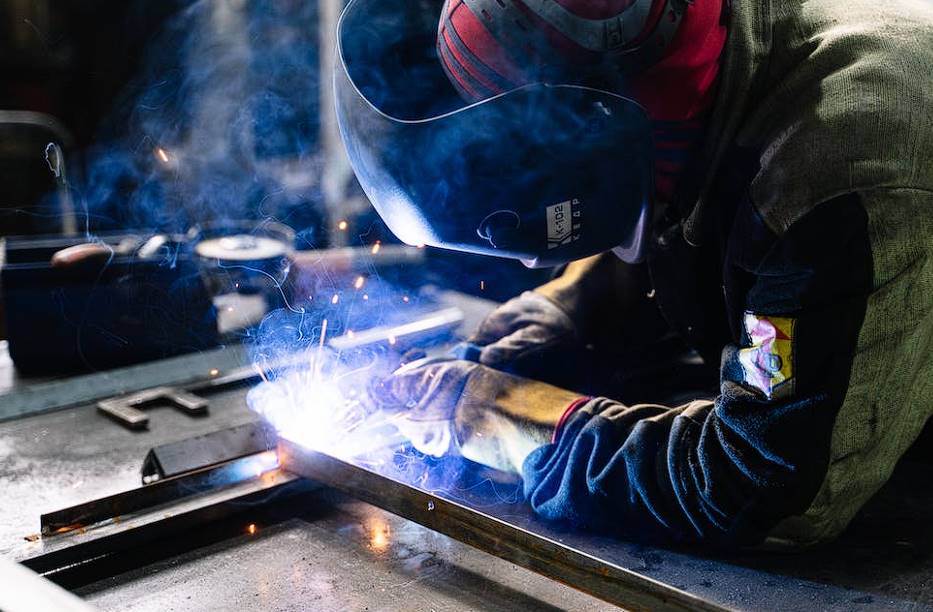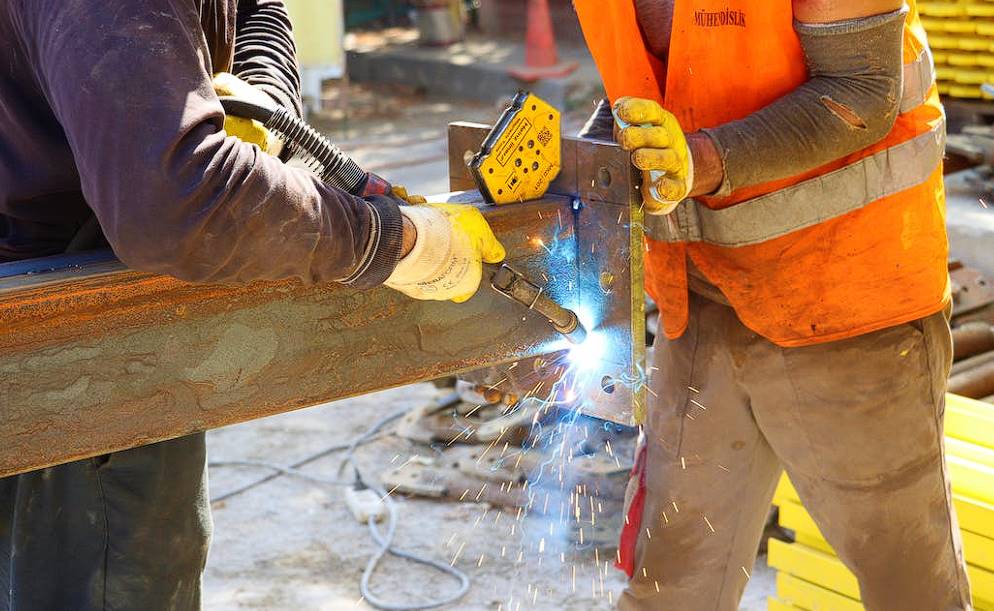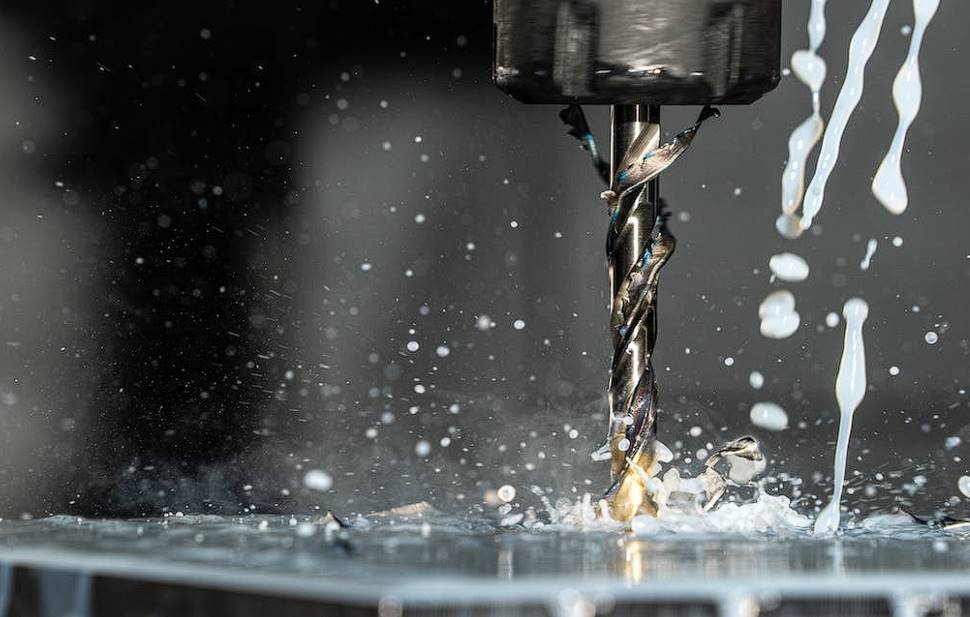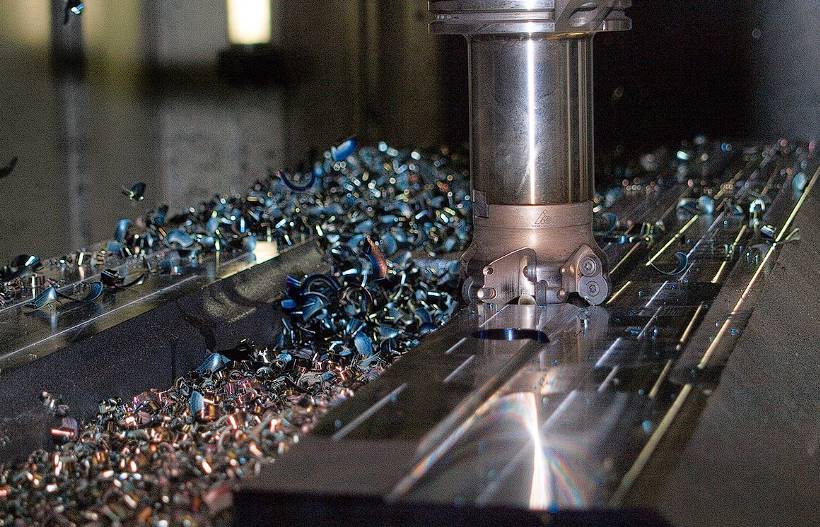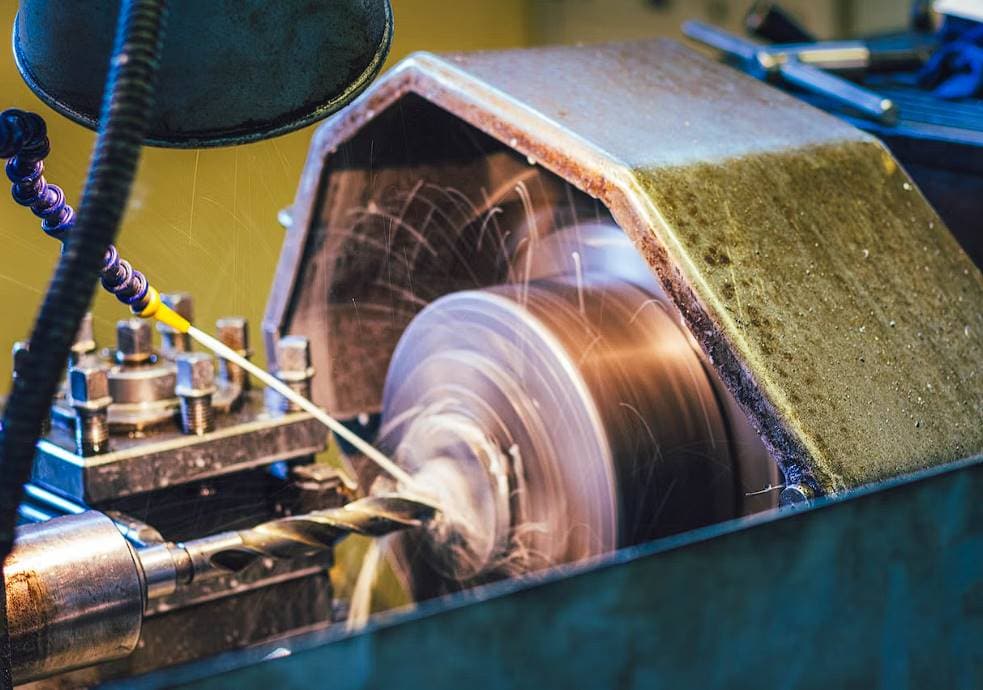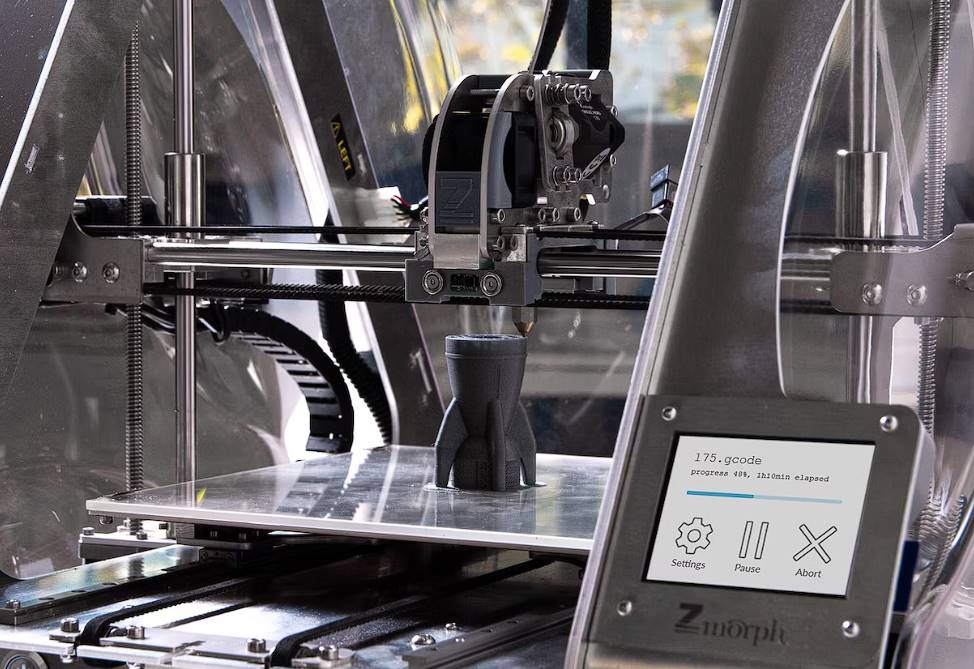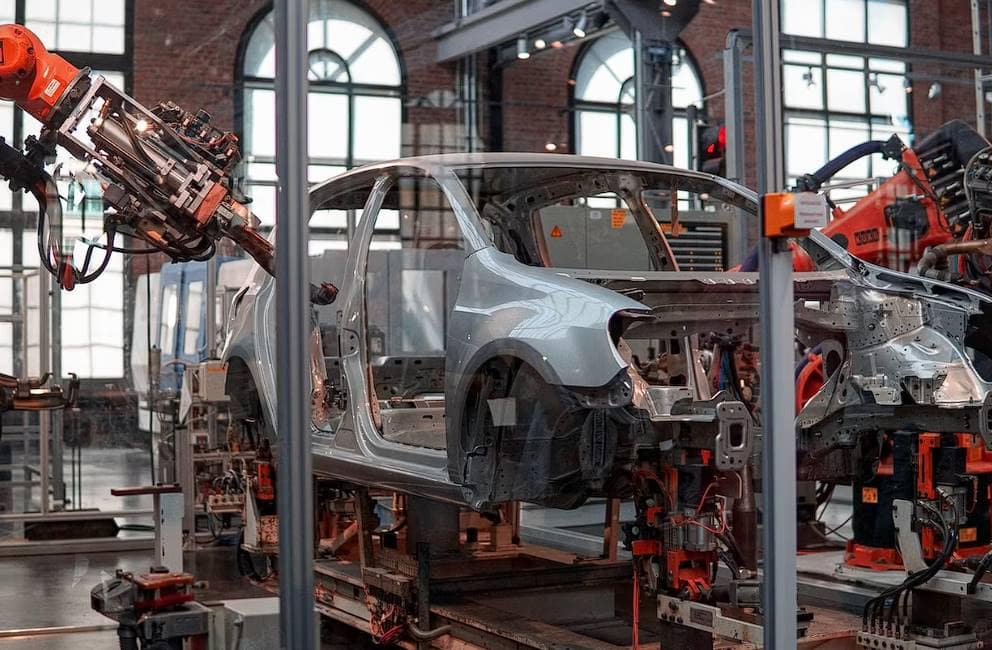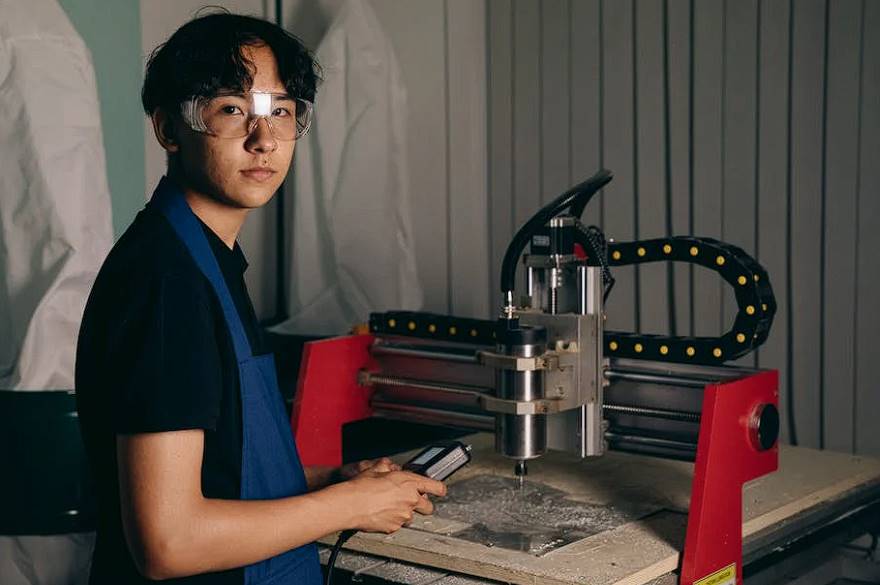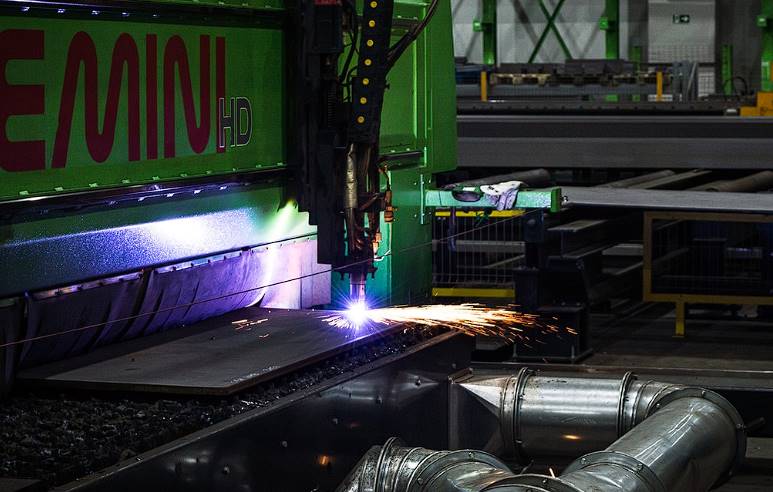Metal rolling is one of the most critical steps in shaping and moulding. It turns raw, stiff materials into accurate and imagined shapes. At first look, rolling metal is a simple idea: press or squeeze it to make it thinner or change its shape. But as we look deeper, we find a world of accuracy, creativity, and new ideas that have been changing for hundreds of years.
Rolling metal has been an essential part of progressing civilisations for a very long time, from the forges of blacksmiths in the Stone Age to the high-tech rolling mills of today. It has been used to make everything from simple tools to buildings that touch the sky.
Learning About Rolling Metal
This transformative process, which involves passing the metal through rollers to reduce its thickness, unify its thickness, or impart desired mechanical properties, is not just about machinery and brute force; it's an art that combines technology, skill, and science in equal measure.
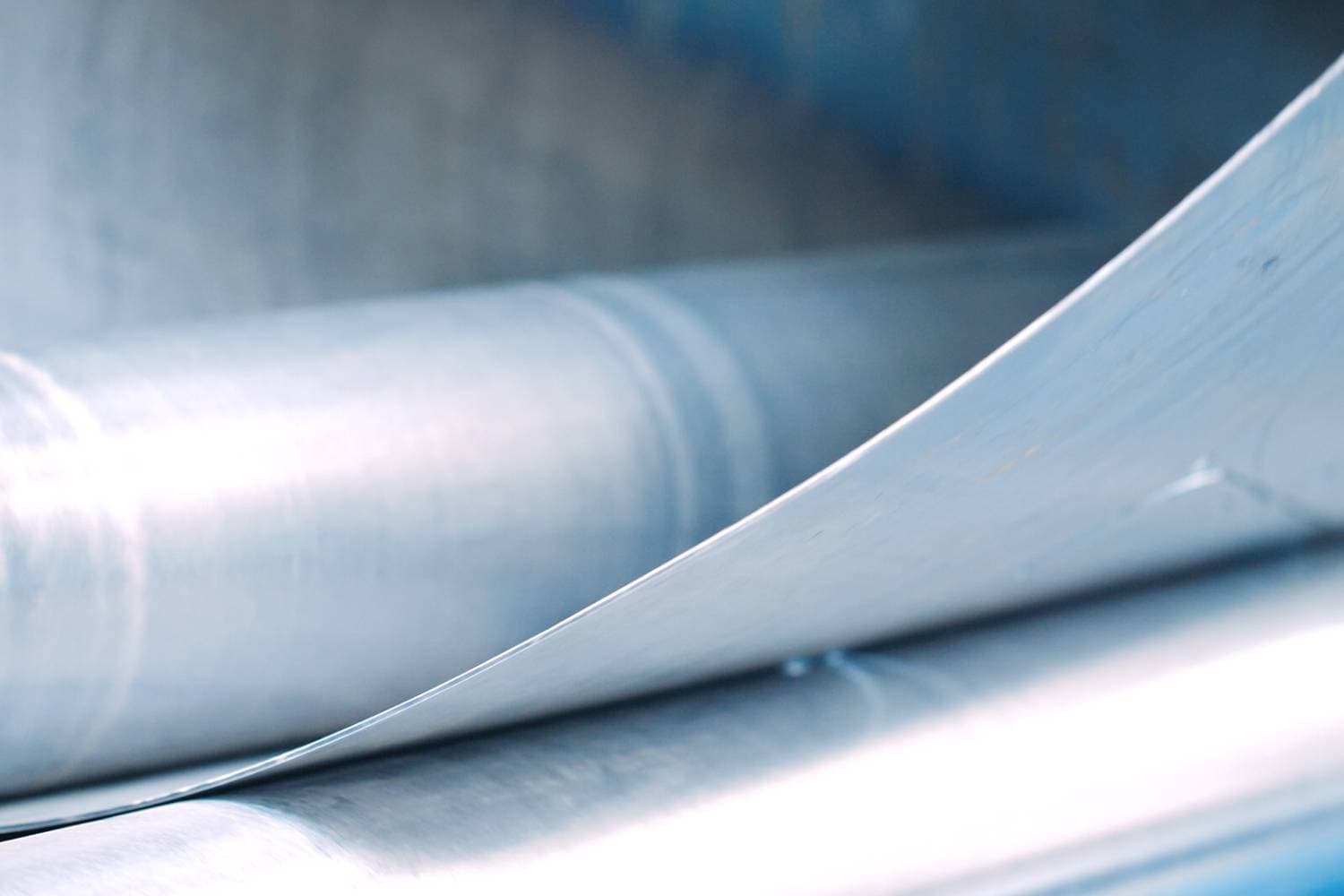
The Art And Science Of Metal Rolling
At its core, metal rolling is a multi-step process that demands precision, expertise, and foresight. It's a dance between the material and machine, each step carefully choreographed to ensure the metal changes form and meets the exacting standards required for its next role.
Whether hot rolling, where metal is processed at temperatures above its recrystallisation point, or cold rolling, performed below this critical temperature, the goal remains to produce metal products with precise dimensions, superior surface finishes, and enhanced properties.
The Evolution Of Rolling Techniques
From the earliest rolling mills in 600 BCE to the sophisticated plants of today, the journey of metal rolling is a testament to human ingenuity and engineering prowess. Innovations such as the introduction of steam power in the eighteenth century and the development of modern rolling practices by pioneers like Henry Cort have propelled this process into the forefront of manufacturing.
The Precision Of Modern Rolling
Today's metal rolling is a far cry from its rudimentary beginnings. With advanced machines like the 4-Roll Bending Machine, operators can achieve levels of precision that were once unthinkable, transforming nearly any metal plate into functional pieces that exceed expectations. This precision is crucial, as even minor imperfections can lead to significant defects, affecting the finished product's overall structural integrity and reliability.
The Importance Of Skilled Operators
Behind every rolled metal piece's success lies the operators' skill and experience. With their deep understanding of metals, rolling techniques, and preventative measures, these craftsmen are the unsung heroes of the metal fabrication industry. Their ability to navigate the complexities of the rolling process ensures that each piece of metal not only meets but often surpasses the required standards.
The Role Of Quality Equipment
The quality of the rolling machines plays a pivotal role in the process's success. High-end machines enable operators to produce rolled metal with greater ease and speed, saving time and resources. However, the choice of machine is just one piece of the puzzle. The synergy between skilled operators and top-tier machinery truly sets the best in the business apart.
The Metal Rolling Process
The metal rolling process is a cornerstone in metalworking. This transformative procedure has evolved significantly from its ancient origins to today's high-tech operations.
Fundamental to shaping and forming metal, it involves passing the material between two or more rollers to reduce its thickness, improve uniformity, and enhance its inherent properties. Let's delve into the intricacies of this vital manufacturing technique, exploring its principles, variations, and the technological advancements that have shaped its development.
The Essence Of Metal Rolling
At its core, metal rolling is about altering the physical dimensions of metal stock. Like the art of rolling dough, this process stretches and compresses metal, not to change its volume but to modify its shape and characteristics.
The operation can be performed at various temperatures, leading to two primary categories: hot and cold rolling. Hot rolling occurs above the metal's recrystallisation temperature, reducing deformation resistance. Cold rolling, performed below this critical temperature, enhances the metal's finish and increases its strength through strain hardening.
Historical Perspectives And Evolution
The journey of metal rolling from its rudimentary beginnings to the sophisticated processes we see today is a testament to human ingenuity. The earliest documented rolling mills date to around 600 BCE in the Middle East and South Asia. However, it was only during the Industrial
Revolution that the process saw significant advancements, with the introduction of steam power dramatically increasing production capabilities. The subsequent centuries have seen continuous improvements, with modern rolling mills featuring advanced automation and precision engineering to meet the demands of contemporary manufacturing.
Modern Rolling Techniques
Today's metal rolling processes are diverse, catering to the specific needs of various industries. From creating thin sheets and foils to producing large beams and structural components, rolling is unmatched in versatility. Advanced rolling mills, such as the four-high and cluster mills, offer precise control over thickness and shape, allowing for the production of high-quality metal products with uniform properties.
Types Of Metal Rolling Mills
These mills vary significantly in design and operation, each tailored to specific types of rolling processes and materials. Understanding the different types of rolling mills is crucial for anyone involved in metalworking, as each type offers unique advantages and features suited to various manufacturing needs.
Two-High Rolling Mills
The simplest form of rolling mills, two-high mills, consist of two opposing rolls between which the metal is passed. These mills can be either reversing or non-reversing. In a reversing mill, the material passes in one direction through the rolls; then, the rolls rotate in the opposite direction to pass the material again. This type is commonly used for hot rolling due to its simplicity and ability to handle high loads. Conversely, non-reversing mills only allow the material to pass in one direction, making them more suited for certain types of cold rolling.
Three-High Rolling Mills
Three-high rolling mills, consisting of three rolls arranged vertically, are designed to improve productivity. This setup allows the workpiece to pass through the top and bottom rolls in one direction and then through the middle and bottom rolls in the opposite direction without reversing the rolls. This continuous operation makes three-high mills more efficient than two, particularly for large-scale production.
Four-High Rolling Mills
Four-high rolling mills introduce two additional rolls above and below the main rolls to support them. This design reduces the diameter of the main rolls, allowing for finer control over the finished product's thickness and a higher-quality surface finish. Four-high mills are versatile and can handle various materials' hot and cold rolling processes.
Cluster Rolling Mills
Cluster rolling mills, also known as Sendzimir mills, are an advanced type of rolling mill that uses a cluster of rolls in a symmetrical arrangement. This design allows for applying a higher rolling pressure without bending the rolls, making it ideal for rolling thin materials and achieving high levels of precision. Cluster mills predominantly use cold rolling operations for materials like stainless steel and high-strength alloys.
Tandem Rolling Mills
Tandem rolling mills consist of multiple stands, each containing a set of rolls. The metal passes consecutively through these stands, gradually reducing its thickness with each pass. Tandem mills are used for mass production and can roll large volumes of metal with uniform thickness and high efficiency. They are commonly employed in producing flat products like sheets and strips.
Universal Rolling Mills
Universal rolling mills are specialised mills designed to produce a wide range of products, including beams, channels, and angles. These mills feature horizontal and vertical rolls that can be adjusted to roll various cross-sections, making them highly versatile for producing complex shapes. Universal mills are essential in the construction and structural steel industries.
Applications Of Rolled Metal
Rolled metal products are integral to modern infrastructure, manufacturing, and technology. The versatility of metal rolling processes—whether hot rolling for malleable, easy-to-work metals or cold rolling for strength and precision—allows various applications across various industries. Here are some of the most prominent uses of rolled metal products.
Construction And Infrastructure
Rolled metal products are foundational to building structures and infrastructure in the construction industry. Steel beams, girders, and columns—produced through hot rolling processes—are essential for constructing buildings, bridges, and skyscrapers due to their strength and durability. Similarly, cold-rolled metal products, such as steel sheets and plates, are used for roofing, cladding, and flooring, offering aesthetic appeal and structural integrity.
Automotive Industry
The automotive sector relies heavily on rolled metal for structural components and exterior body panels. Cold-rolled steel offers a high-strength, lightweight solution for vehicle frames, enhancing safety and fuel efficiency. Additionally, aluminium and steel alloys are commonly rolled into sheets used in the bodywork of cars, trucks, and buses, providing durability and resistance to corrosion.
Aerospace And Aviation
The demand for high-strength, lightweight materials in aerospace and aviation leads to the extensive use of rolled aluminium and titanium. These metals are rolled into sheets and plates that form the skin of aircraft and structural components within the fuselage and wings. The precision and strength-to-weight ratio of cold-rolled metals are crucial for ensuring aircraft performance and safety.
Energy Sector
Rolled metal products are critical in the energy sector, including constructing pipelines, wind turbines, and electrical towers. Steel plates are rolled to produce large-diameter pipes essential for transporting oil, gas, and water. Wind turbine towers and blades also benefit from the structural properties of rolled steel and aluminium, contributing to renewable energy generation.

Manufacturing And Engineering
The manufacturing and engineering sectors utilise rolled metal in many applications, from machinery and equipment to tools and fasteners. Rolled metal bars, rods, and sections are machined into components that meet precise specifications. Cold-rolled metals, known for their superior surface finish and dimensional accuracy, are particularly valued for high-precision parts.
Consumer Goods
Rolled metal products are used in a wide array of consumer goods, including appliances, furniture, and electronics. For instance, stainless steel, rolled into sheets and coils, is a popular choice for kitchen appliances, cutlery, and countertops due to its resistance to corrosion and ease of cleaning. Metal rolling also enables the production of lightweight, durable frames for furniture and electronic devices.
Art And Design
Beyond industrial applications, rolled metal products are also used in art and design, offering structural capabilities and aesthetic flexibility. Sculptors and designers often choose rolled metals for their work, taking advantage of the material's ability to be shaped into complex forms and structures. From public art installations to architectural features, rolled metals contribute to creative projects' visual and functional aspects.
Conclusion
Metal rolling is crucial in shaping and moulding materials into accurate shapes. This transformative process involves passing the metal through rollers to reduce its thickness, unify it, or impart desired mechanical properties. Rolling is an art that combines technology, skill, and science equally. The evolution of rolling techniques, from the earliest mills in 600 BCE to the sophisticated plants of today, is a testament to human ingenuity and engineering prowess.
Modern rolling is a far cry from its rudimentary beginnings, with advanced machines like the 4-Roll Bending Machine enabling operators to achieve levels of precision that were once unthinkable. Skilled operators play a vital role in the success of every rolled metal piece, as their deep understanding of metals, rolling techniques, and preventative measures ensures each piece meets or often surpasses the required standards. The quality of rolling machines plays a pivotal role in the process's success.
High-end machines enable operators to produce rolled metal with greater ease and speed, saving time and resources. The synergy between skilled operators and top-tier machinery sets the best in the business apart. The metal rolling process is a cornerstone in metalworking, evolving significantly from its ancient origins to today's high-tech operations.
It involves altering the physical dimensions of metal stock and its shape and characteristics, which can be performed at various temperatures. Modern rolling mills feature advanced automation and precision engineering to meet the demands of contemporary manufacturing. Metal rolling mills are essential tools in the metalworking industry, offering unique advantages and features for various manufacturing needs.
Two-high mills consist of two opposing rolls, reversing or non-reversing. Three-high mills have three rolls arranged vertically, making them more efficient for large-scale production. Four-high mills introduce two additional rolls to support them, allowing for finer control over finished product thickness and a higher-quality surface finish. Cluster rolling mills use a cluster of symmetrical rolls, allowing for higher rolling pressure without bending the rolls.
Tandem rolling mills consist of multiple stands with a set of rolls used for mass production and producing flat products like sheets and strips. Universal rolling mills are specialised mills designed to produce a wide range of products, including beams, channels, and angles. Rolled metal products are integral to modern infrastructure, manufacturing, and technology. They are used in construction, automotive, aerospace, aviation, energy, manufacturing, engineering, consumer goods, and art and design.
Construction uses steel beams, girders, and columns for constructing buildings, while the automotive sector relies on cold-rolled steel for structural components and exterior body panels. The energy sector uses rolled aluminium and titanium for aircraft skin and structural components. Rolled metal is used in machinery, equipment, tools, fasteners, and consumer goods in the manufacturing and engineering sectors.
Content Summary
- Metal rolling transforms metal by passing it through rollers to reduce or unify its thickness and enhance its properties.
- This process has evolved from ancient forges to today's high-tech mills, showcasing centuries of innovation.
- Precision, expertise, and careful planning are essential in metal rolling to meet stringent quality standards.
- The evolution of rolling techniques highlights human ingenuity and engineering skills across millennia.
- The introduction of steam power and innovations by pioneers like Henry Cort revolutionised metal rolling.
- Modern rolling's precision is vital, as minor flaws can compromise the integrity and reliability of products.
- Skilled operators are crucial for managing the complex rolling process and achieving high-quality outcomes.
- High-end rolling machines allow for more efficient production, saving time and resources.
- Today's rolling processes cater to diverse industry needs, producing everything from thin sheets to structural beams.
- Understanding the various types of rolling mills is key for those in metalworking, given each mill's unique benefits.
- Rolling mills are indispensable in the construction, automotive, aerospace, and energy sectors.
- Two-high mills feature two opposing rolls and come in reversing and non-reversing variants.
- With their vertical roll arrangement, three high mills offer efficiency advantages for large-scale production.
- Four-high mills use additional rolls for support, enabling finer control over product thickness and quality.
- Cluster mills, or Sendzimir mills, employ a symmetrical roll cluster for higher pressure without bending.
- Tandem mills, with multiple roll stands, are ideal for the mass production of flat products like sheets and strips.
- Universal mills are designed to produce a broad range of products, enhancing versatility in manufacturing.
- Rolled metal products are foundational to modern infrastructure, technology, and manufacturing.
- Rolled metal forms the backbone of buildings, bridges, and other structures in construction.
- The automotive industry relies on rolled steel for vehicle frames, combining strength with lightweight design.
- Aerospace applications of rolled metal include aircraft skins and structural components made from aluminium and titanium.
- The energy sector utilises rolled metal in renewable energy installations like wind turbines and solar panels.
- Manufacturing and engineering sectors depend on rolled metal for machinery, tools, and precise components.
- Consumer goods, from appliances to electronics, often incorporate rolled metal for durability and aesthetics.
- Art and design projects frequently utilise rolled metal for its structural and visual qualities.
- The metal rolling process combines art and science, requiring technical skill and creative vision.
- Rolled metal's versatility allows it to be used in various functional and decorative applications.
- The reliability of rolled metal products is crucial for safety and performance in various applications.
- The development of rolling technology continues to push the boundaries of what can be achieved with metal.
- Rolled metal is critical in the global economy, underpinning key industries and innovations.
- The future of metal rolling includes advancements in automation and material science.
- Environmental considerations are increasingly important in the metal rolling industry, driving sustainable practices.
- The global reach of metal rolling technology reflects its importance in modern manufacturing and construction.
- Rolled metal contributes to the aesthetic appeal and functionality of architectural designs.
- The automotive sector's evolution is closely tied to advancements in metal rolling techniques.
- Aerospace advancements rely on high-quality, lightweight rolled metal for critical components.
- Energy infrastructure, including pipelines and grids, depends on the strength and reliability of rolled metal.
- The precision of rolled metal is essential for manufacturing high-performance machinery and equipment.
- Consumer products made from rolled metal combine durability with sleek, modern designs.
- The art world utilises rolled metal for its ability to be shaped into complex, enduring forms.
- Innovations in rolling mill technology enhance efficiency and product quality across industries.
- The diversity of rolled metal applications showcases its fundamental role in technological development.
- Rolled metal's impact on daily life is evident in the buildings we inhabit, the vehicles we drive, and the products we use.
- The evolution of metal rolling techniques promises to deliver even more sophisticated and versatile products.
- Skilled metalworkers and engineers continue to explore new applications and improvements in metal rolling.
- Integrating digital technologies in rolling mills is set to revolutionise the metalworking industry.
- Rolled metal's contribution to renewable energy projects highlights its role in sustainable development.
- The challenge of maintaining quality while increasing production efficiency drives innovation in metal rolling.
- The history of metal rolling is a story of human achievement and technological progress.
- As metal rolling technology advances, its applications will expand, further shaping the future of manufacturing and design.
Frequently Asked Questions
Metal is rolled to modify its structure and properties for various applications. This process can improve the metal's strength, flexibility, and surface finish, making it suitable for different industrial uses, from construction to automotive manufacturing.
The main types of metal rolling include hot rolling, where the metal is heated above its recrystallisation temperature, and cold rolling, performed at or near room temperature for increased strength and finer surface finishes.
Hot rolling is performed at high temperatures, making the metal easier to deform and shape. It results in products with rough surfaces. Cold rolling, on the other hand, is done at room temperature or below, leading to products with tighter tolerances and smoother surfaces.
The primary equipment used in metal rolling is the rolling mill, which can vary in design and size depending on the specific requirements of the rolling process. Common types of rolling mills include two-high, three-high, four-high, cluster, and tandem mills.
Most metals, including steel, aluminium, copper, and brass, can be rolled. However, the specific rolling process and equipment may vary depending on the metal's properties and the desired end product.

